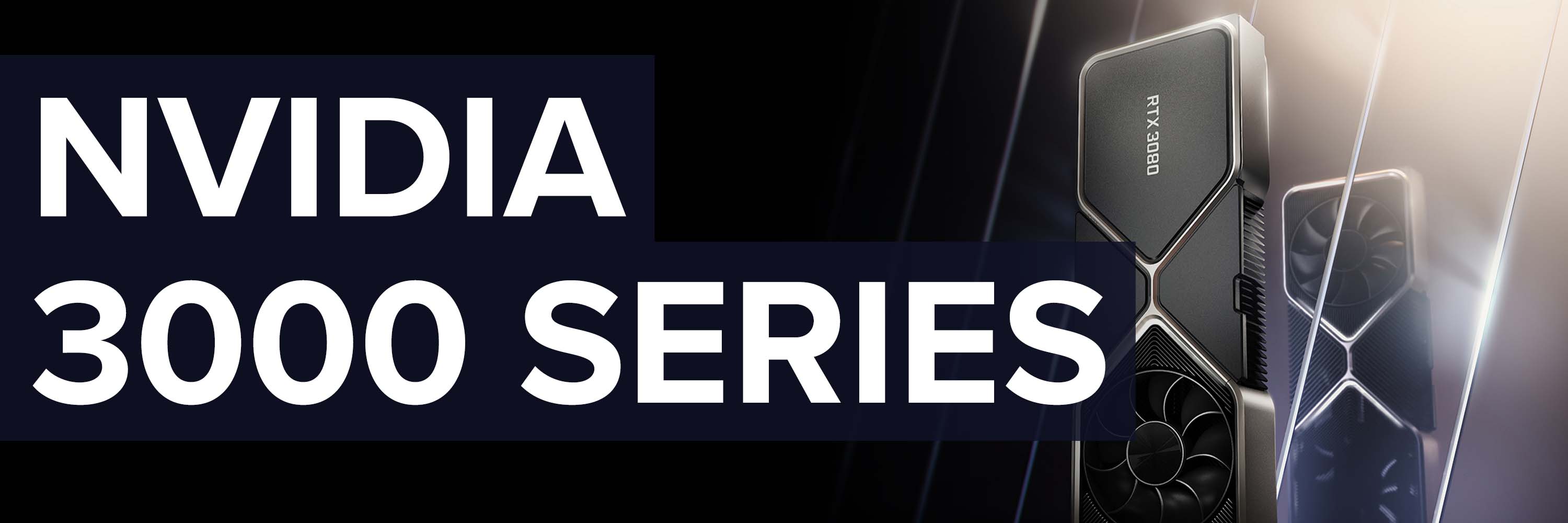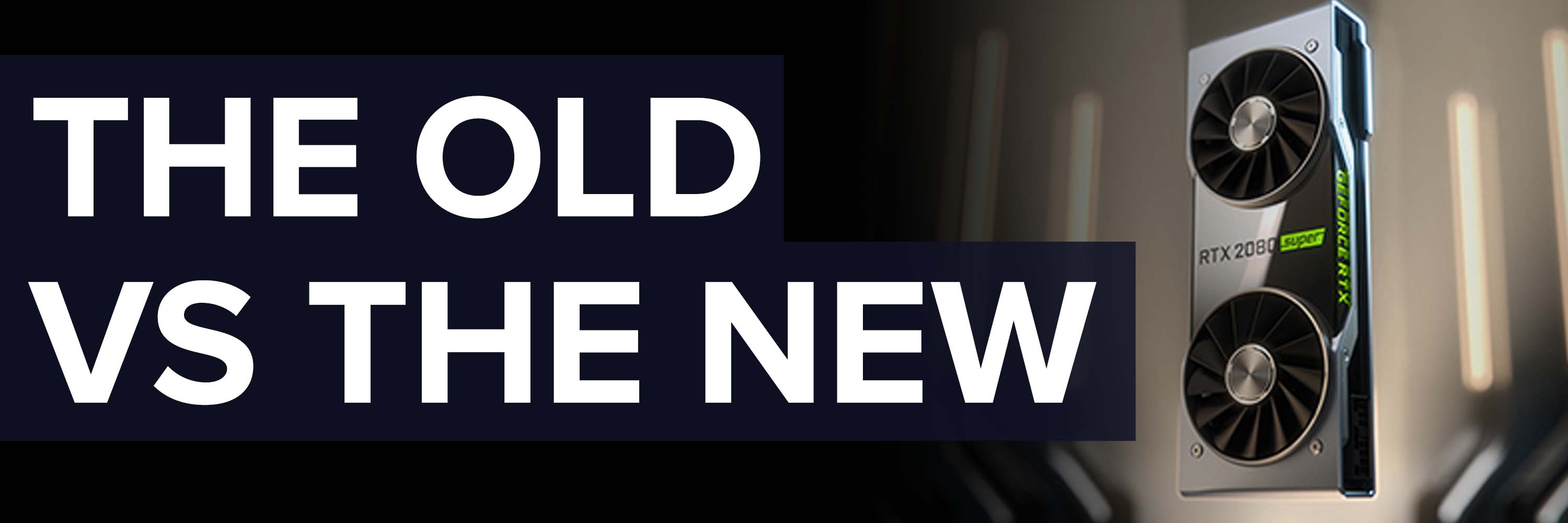If you’ve got a 10-series or 20-series graphics card, we dive into whether you should be tempted into buying an Nvidia RTX 30-series GPU.
Nvidia RTX 30 vs RTX 20 vs GTX 10 series side-by-side
2020 is going to be one hell of an expensive year for multiplatform gamers seeking to eke the best fidelity out of their games. If it’s not a choice between the next-gen consoles – PlayStation 5 or Xbox Series X – Nvidia has just announced its latest 30-series graphics cards for high-end PC gaming.
Let’s take a closer look at the essential details for Nvidia’s latest range of top-of-the-line graphics processing units (GPUs).
What graphics cards are in the Nvidia 30-series line-up?
Though time will doubtlessly prove that there are more 30-series cards waiting in the wings, for now, Nvidia has started its latest generation of graphics cards with three options: the most-affordable GeForce GTX 3070, mid-range GeForce RTX 3080, and the break-the-bank GeForce RTX 3090.
Nvidia is saying this line of GPUs offers double the performance and 1.9 times the power efficiency stacked next to the previous Turing-based (20-series) graphics cards. All three GPUs offer a second generation of Nvidia RTX, which is what powers ray tracing, and third-generation Tensor cores which, in practical terms, use AI to offer upscaled graphics (among other things).
The high-end hardware will be also be supported by software that includes Nvidia Reflex, which is targeted at competitive gamers; Omniverse Machinima for video-making storytellers; and Nvidia Broadcast, which rolls the very cool Nvidia RTX Voice (slayer of background noise) into a more fully-featured suite for those who want to stream games.
Usual third-party manufacturers including Asus, MSI, and PNY are also releasing 30-series graphics cards alongside Nvidia.
When does the Nvidia 3000 series release in Australia?
The NVIDIA RTX 3080 will be available from Thursday, the 17th of September here in Australia. The RTX 3090 arrives Thursday, the 24th of September, and the RTX 3070 arrives in October 2020.

Nvidia GeForce 3070 vs GeForce 3080 vs GeForce 3090
Outside of cost, the big differences between Nvidia’s 3070, 3080, and 3090 GPUs is an incrementally increasing number of CUDA cores, more memory (faster, too), and incrementally increasing memory interface width. Here’s how they look stacked next to each other.
Nvidia GeForce 30-series specs comparison
On top of this, all Nvidia GeForce 30-series graphics cards support the following technologies:
- Microsoft DirectX 12 Ultimate
- Nvidia DLSS
- PCI Express Gen 4
- Nvidia GeForce Experience
- Nvidia Ansel
- Nvidia FreeStyle
- Nvidia ShadowPlay
- Nvidia Highlights
- Nvidia G-Sync
- Game Ready Drivers
- Nvidia Studio Drivers
- Nvidia GPU Boost
- Vulkan RT API, OpenGL 4.6
- 7th generation Nvidia Encoder
- 5th generation Nvidia Decoder
- VR ready
- 7680x4320 (8K) max digital resolution
- 1x HDMI 2.1 connector and 3x DisplayPort 1.4a connectors
- 4x monitors
- HDCP 2.3
SLI is short for scalable link interface, which is a fancy way of saying that you can link two or more Nvidia GPUs together. The idea is that two or more GPUs leads to better performance, but it depends on whether the game or app supports the technology to take full advantage of it. Otherwise, you might see performance improvements of around 50% with a second graphics card in SLI, but unless you’re playing at ultra-high resolutions with maxed-out settings, it’s tricky to justify the cost of two graphics cards outright. If this is of interest, it’s better to plan for a second graphics card down the track when the cost of a second one is noticeably cheaper.

Nvidia GeForce 3070 vs GeForce 2070 vs GeForce 1070
Like smartphones, it makes sense to look at upgrading your graphics card every second GPU generation (budget allowing), which is why Nvidia 10-series owners are likely having a good look at the 30-series to see what bang they get for their upgrade buck. Similarly, enthusiast PC gamers who already have 20-series cards may also be tempted to have a peek at the new tech inside the 30-series cards.
Here’s a closer look at how the Nvidia GeForce 3070, 2070, and 1070 stack up next to each other.
Nvidia GeForce 3070 vs GeForce 2070 vs GeForce 1070 specs
Given that the GeForce RTX 2070 was flagged as a replacement for the GeForce GTX 1080, the jump from a 1070 to a 3070 will be very noticeable in terms of performance gains, not just in terms of frames but also in terms of access to ray tracing and DLSS-powered graphics upscaling (higher frames for better-looking games in supported titles). The main thing to check if you only plan on upgrading your GPU is that your power supply meets the recommended 650W.
For 2070 owners, it’s a case of evolution over revolution. You’ll still need to check your power supply meets the recommended 650W, otherwise you’re really looking at a jump from first-generation ray tracing cores to second-generation, and first-generation Tensor cores to third-generation. There’s also a bump in the boost clock, but the massive leap in CUDA cores – from 2,304 in the 2070 to 5,888 in the 3070 – makes for better parallel processing, which means better gains in the frames department when gaming.
Nvidia GeForce 3080 vs GeForce 2080 vs GeForce 1080
This is where upgrade paths get a little trickier. On paper, the Nvidia GeForce RTX 3080 is a monster of a card that’s built to have a noticeable edge over the 2080 Ti (which is itself a beast of a card). During its presentation, Nvidia used the GTX 980 as a base model for comparison. The 2080 Super (faster than a 2080) reportedly has just under three times the performance, but the 3080 boasts around 4.5 times the performance. To put that into context, the 2080 Ti was sitting below 3.5 times the performance of a 980 graphics card.
Let’s take a closer look at how the Nvidia GeForce 3080, 2080, and 1080 stack up next to each other.
Nvidia GeForce 3070 vs GeForce 2070 vs GeForce 1070 specs
The tech leap between the 1080 and even 2080 to the 3080 means this will be a tempting purchase for owners of either of those older GPUs. With almost three times as many CUDA cores as the 2080, 10GB of the latest GDDR6X memory, and a 320-bit memory interface width, the 3080 is poised to offer some eye-candifying gains stacked next to the 1080 and 2080.
Returning to that Nvidia comparison to 980 as the base reference model, the 1080 offered close to double the performance of a 980. But the 3080 is poised to offer around 4.5 times the performance of a 980, with Nvidia noting that the 3080 also boats up to twice the performance of a 2080. Expect the Nvidia GeForce RTX 3080 to blow every consumer Nvidia GPU out of the water, except for the big-ticket 3090.
Nvidia GeForce 3090 vs GeForce 2080 Ti vs GeForce 1080 Ti
It seems that Nvidia has put the ‘Ti’ moniker to bed with its latest line of 30-series GPUs. It makes sense, too, given that the 3080 is effectively a replacement for the Ti cards, which means that the 3090 is more of a replacement for the Titan series, albeit with a comparatively lower price. Still, even comparatively, a US$1,499 asking price for the 3090 is going to translate to the cost of a decent gaming desktop in Aussie dollars.
Here’s how the 3090 looks stacked next to the current reigning consumer GPU (the 2080 Ti), the older 1080 Ti, and the current best GPU: the Nvidia Titan RTX.
Nvidia GeForce 3070 vs GeForce 2070 vs GeForce 1070 specs
In the past, hardcore gamers might have considered a Ti option as viable, but the US$1,499 asking price for the 3090 means it’s more meant for enthusiasts, overclockers, and businesses. Any gamer who’s considered the Ti path from previous generations should be happy with the impressive results of a 3080 GPU. Even those who’ve forked out for the Titan RTX should be impressed by more than double the CUDA cores and a US$1,000 drop in RRP.
The biggest consideration for any of the above card owners looking to jump to the 3090 is the power-supply requirements (750W) and the fact it takes up three slots rather than two. This is not a mini-case-friendly GPU, especially because it’s noticeably longer.
For those not deterred by the 3090’s RRP, expect the kind of performance gains that garner such a high asking price. On paper alone, the almost 2.5 times CUDA cores, faster boost clock, and superior memory interface width all tick the right boxes. More impressively, the 24GB of latest GDDR6X memory suggest this GPU is future-proofed in a way that will likely mean it’ll take a long time for a game to come close to humbling this graphics card.
Related Articles



